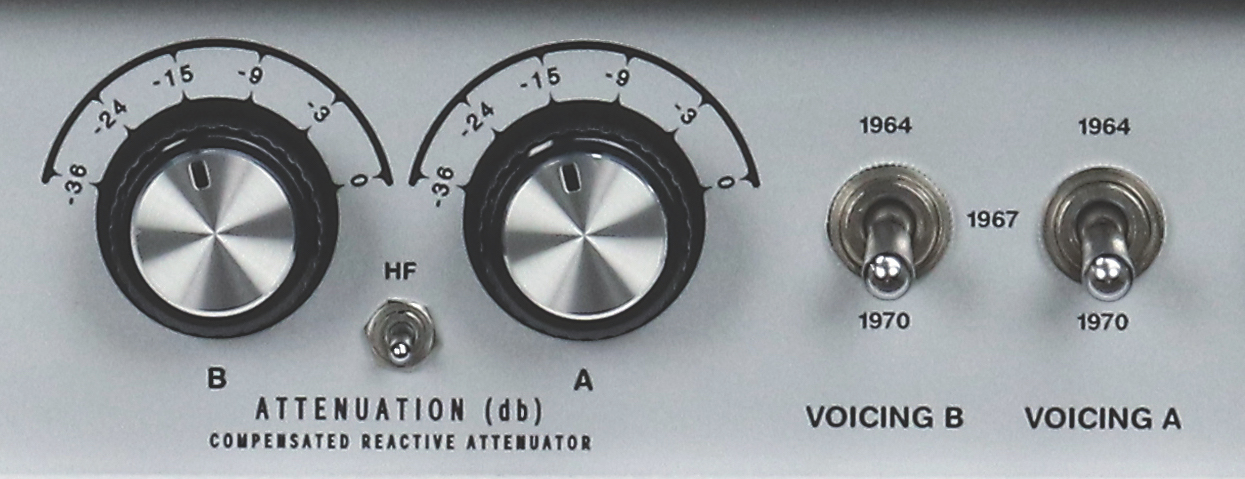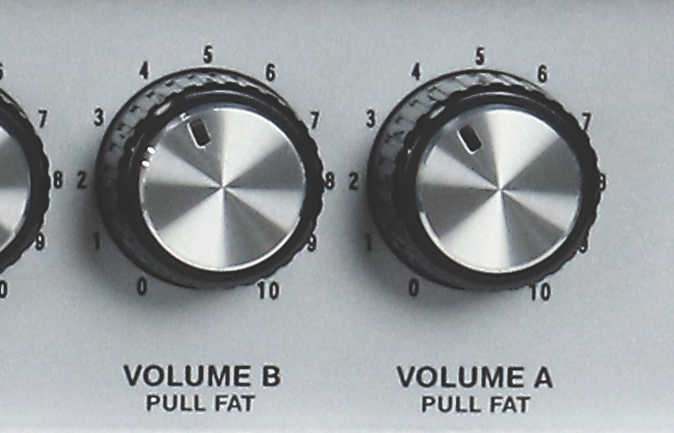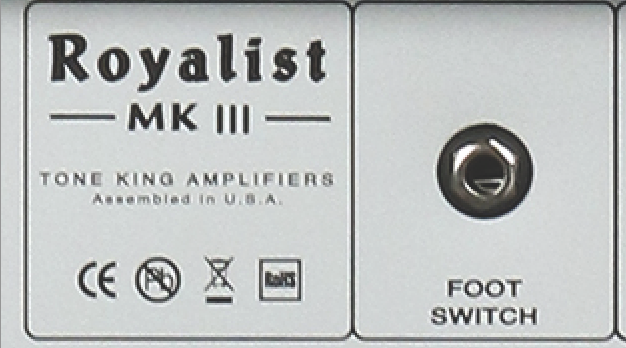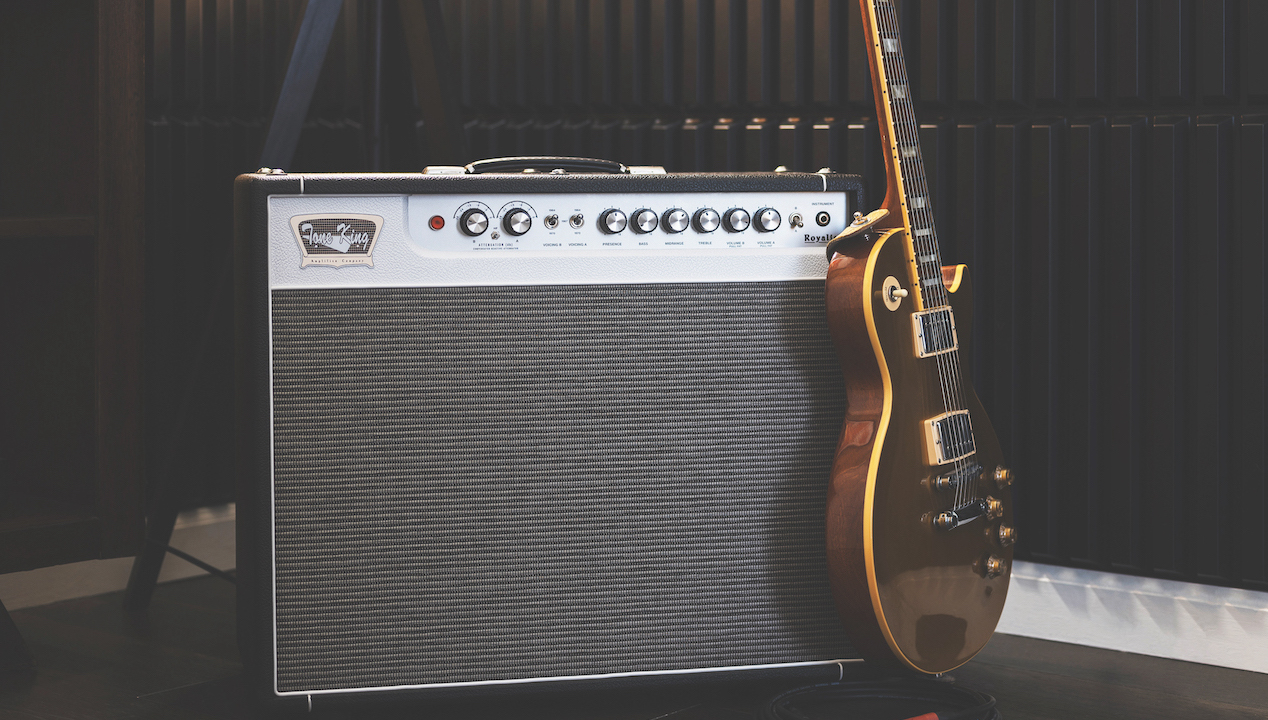Introduced nearly 10 years ago, the original Royalist was the first amp from Tone King dedicated entirely to classic British tones. Prior to that – both under the sole stewardship of founder Mark Bartel, from 1993 to the early ’00s, and during much of his association with Premier Builder’s Guild, from around 2010 to 2016 – most Tone King models offered one American-voiced clean channel and another with a tweed-meets-Marshall dirt tone.
Boutique Amplifiers Distribution (BAD), which has owned the brand since 2016, has brought noteworthy updates to all remaining models in the lineup, and the Royalist MkIII is the latest to get the treatment. The result expands the amp’s functionality while retaining the basic premise, resulting in a circuit that applies its 1964–’70 Marshall-derived sonic template across a more versatile performance range.
Recognizing that many players don’t want a two-channel M-style amp that’s oversimplified as “clean and overdrive,” the MkIII’s designers have given it two – as opposed to the original’s one – that are ostensibly the same but can be user-differentiated with several variables. First, each channel’s volume control has its own Pull Fat function.
Each also has its own three-way toggle for 64/67/70 gain and voicing settings: 64 aims for the lower-gain, more balanced JTM45 (a.k.a. Bluesbreaker) circuit; 67 goes for the crisper highs and increased gain of the Plexi-era amps; and 70 maxes the gain into Super Lead territory. (In actuality, Plexi and Super Lead were not mutually exclusive, but we’ll play along.)
Finally, each channel has its own control to tap the built-in Iron Man II attenuator at -3, -9, -15, -24, or -36 dB, or none at all, as well as a shared high-frequency compensation switch (HF). An EQ complement of treble, middle, bass and presence is also shared between the channels.

The Royalist MkIII generates 40 watts from a pair of EL34 output tubes, with three 12AX7s in the front end for preamp and phase-inverter duties. It also carries a 5AR4 tube rectifier to enable early era compression and bloom. One tube it doesn’t have is the unusual single 6V6GT tube Bartel employed in the original Royalist MkI circuit as a screen voltage regulator.
The combo cab is built from tongue-and-groove Baltic birch plywood, measures 24½ by 21 by 12 inches and weighs 59 pounds. It’s dressed in classic two-tone black-and-white Tolex with white piping and has a black-and-gold grille cloth. The speaker within is a 1660 model custom made for Tone King by Celestion, offset to the far side of the back-tilted, open-back cab to enhance balance and rated to handle 60 watts.
All the latest guitar news, interviews, lessons, reviews, deals and more, direct to your inbox!
As per the majority of Tone King creations – and other amps manufactured by BAD, for that matter – the circuit is a quality PCB construction, efficiently laid out, and loaded with reliable components.
With both a Gibson Les Paul and a Fender Telecaster plugged in, the Royalist MkIII combo presented a few surprises in its format as tested, although it segued into more familiar sonic territory when applied to what we might consider a more classic rig for this template.
The 64/67/70 voicing switches, individual Pull Fat switches, and shared EQ all combine to elicit a lot of variety from channels A and B. Furthermore, no matter how they’re set, each impressively runs the gamut from clean to crunch, with good clarity and articulation throughout the range.

Which is to say, this two-channel platform doesn’t have to be separated into “JMT45 for clean and Super Lead for overdrive,” for example; rather, each historic voicing position applies its own tonality to whatever level of drive you give it on the respective volume knob.
As such, I really dug the Telecaster tapping a 67 voicing at the edge of breakup, for example, or the Les Paul’s neck humbucker for a bluesy lead with the 64 setting and volume rolled to around three o’clock.
Taken more as expected, though, yes, it all still works brilliantly: 64 for fat rhythm and 70 for crispy, crunchy leads? Easy peasy, and with familiar classic-rock results all the way.
On one hand, the Royalist MkIII’s resistance to slide into overdrive too quickly, even with the Les Paul applied, represents an admirable realism in this circuit, in that genuine non-master-volume Marshalls of the ’60s and early ’70s didn’t start to scream until cranked up to ear-melting volumes. This is where the attenuation controls step in, and indeed they’re an essential – perhaps the essential – part of the formula here.

Even so, I was rather surprised that, for example, none of the voicing settings started to break up until well past the volume control’s midpoint and to some extent remained cleaner for longer than the originals I’ve played. And, rather unexpectedly, the open-back 1x12 combo format seemed to enhance this observation.
Plugged into a closed-back 2x12 extension cab with Greenback-style speakers, or into a Torpedo Captor X loaded with an IR of a Marshall 4x12 with pre-Rola Celestions, the Royalist MkIII really started to sound like the classics to which it pays homage, with all the grunt, grind, and thud of a good Plexi.
Which is to say, the combo sounds very good and provides a loud, powerful grab-and-go package, but for portability, flexibility, and broader sonic familiarity I think I’d opt for the Royalist MkIII head if I were to make one my own.
However you slice it, though, it’s an impressive rethink of the best of early British rock tones, cleverly packaged to suit a wide range of 21st century performance needs.
Specifications
CONTACT toneking.com
PRICES $2,695 street; head, $2,495
CHANNELS 2
CONTROLS Volume A and volume B (each with Pull Fat function), treble, mid, bass, presence, independent three-way voicing/gain switches, independent attenuation controls with shared HF (high frequency) compensation switch
POWER 40 watts
TUBES Three 12AX7 preamp tubes, two EL34 output tubes, 5AR4 rectifier
SPEAKER Single 12” custom Celestion 1660 speaker
EXTRAS Single-button foot switch for channel selection, 4Ω/8Ω/16Ω speaker impedance selector, ¼” line out with level control
WEIGHT 59 lbs
ASSEMBLED USA
KUDOS A clever reconfiguring of three classic Marshall-inspired circuits, boasting convenient built-in attenuation
CONCERNS The lack of an effects loop will bother some players; others might find the head option more versatile
Dave Hunter is a writer and consulting editor for Guitar Player magazine. His prolific output as author includes Fender 75 Years, The Guitar Amp Handbook, The British Amp Invasion, Ultimate Star Guitars, Guitar Effects Pedals, The Guitar Pickup Handbook, The Fender Telecaster and several other titles. Hunter is a former editor of The Guitar Magazine (UK), and a contributor to Vintage Guitar, Premier Guitar, The Connoisseur and other publications. A contributing essayist to the United States Library of Congress National Recording Preservation Board’s Permanent Archive, he lives in Kittery, ME, with his wife and their two children and fronts the bands A Different Engine and The Stereo Field.


